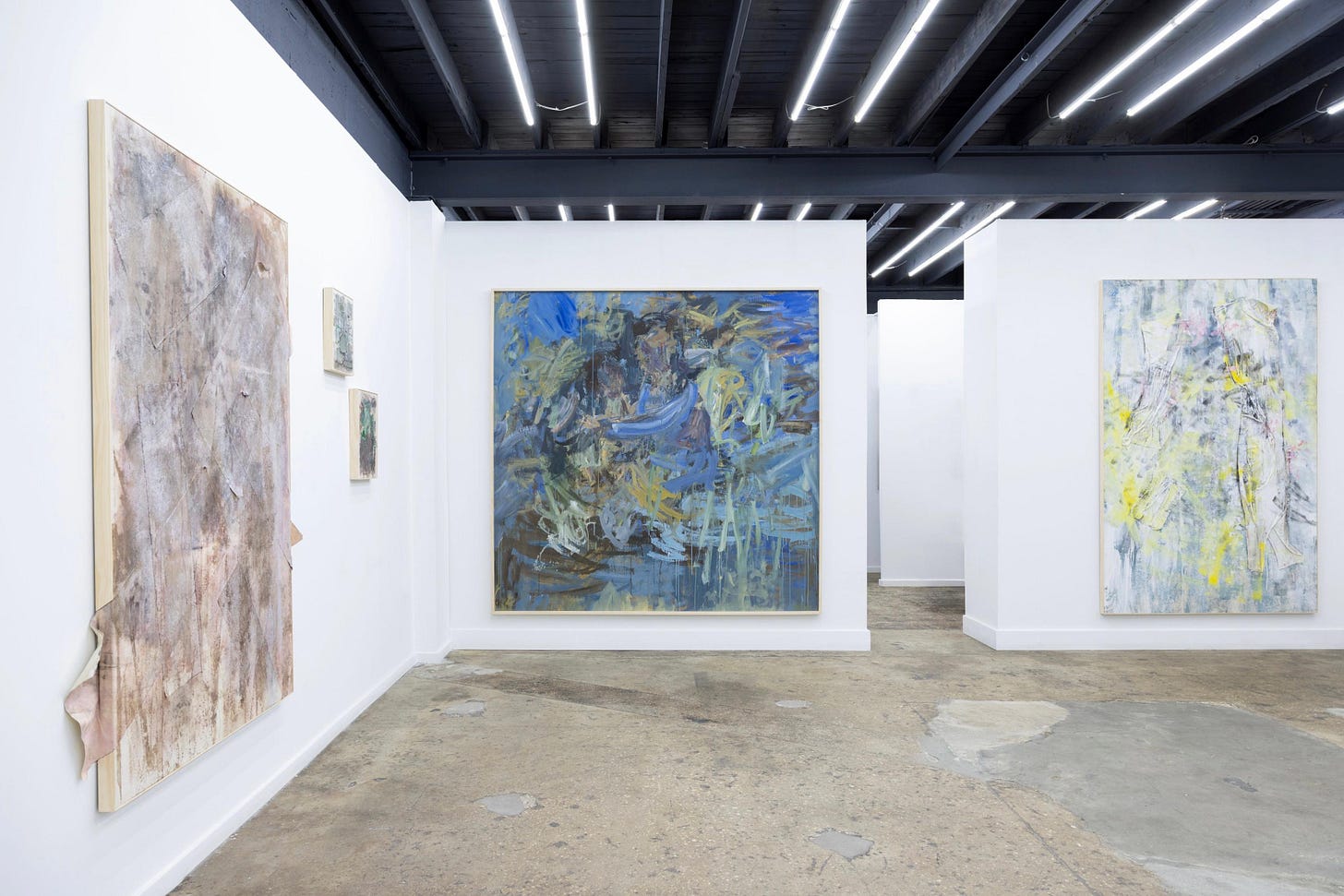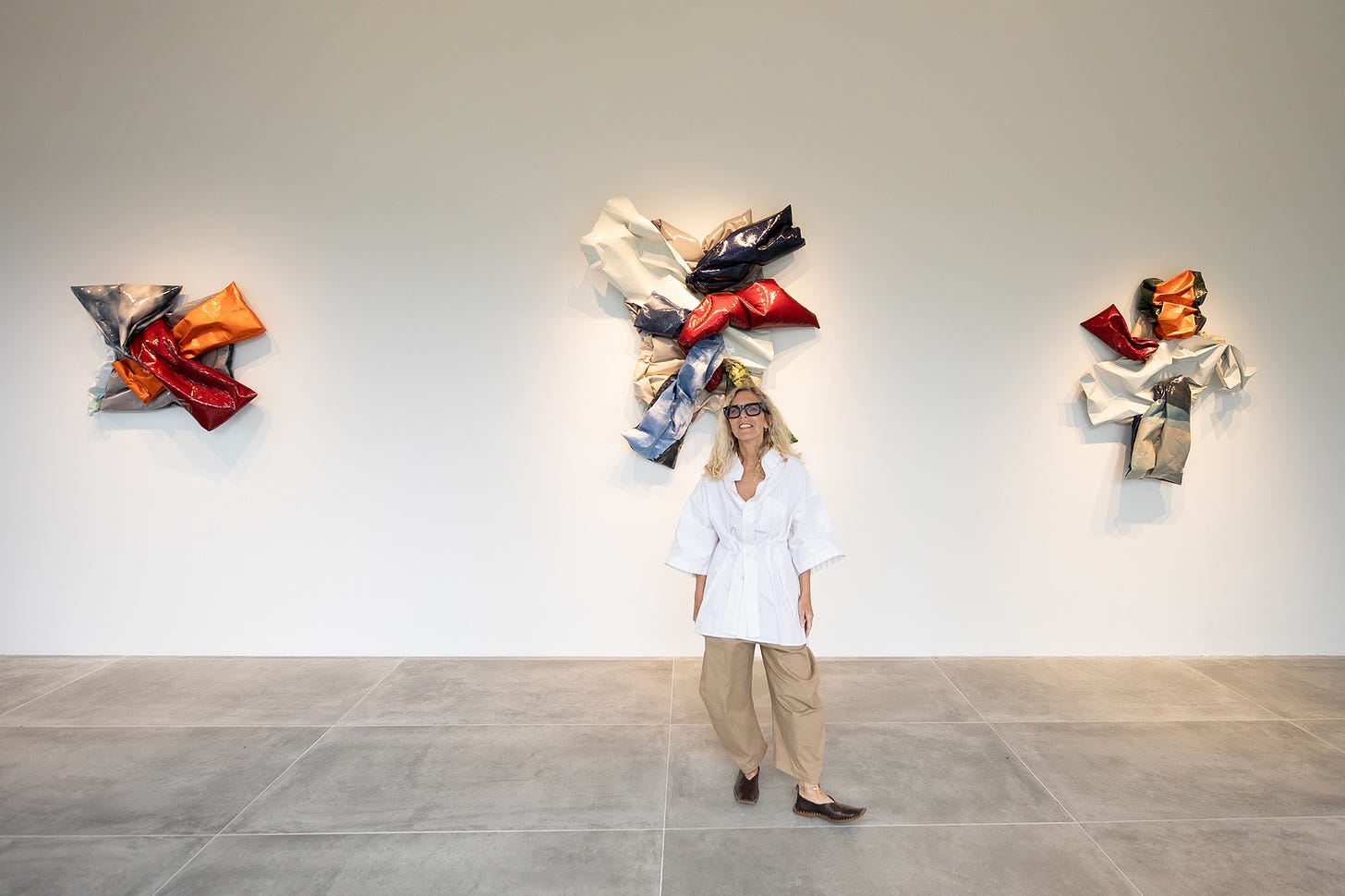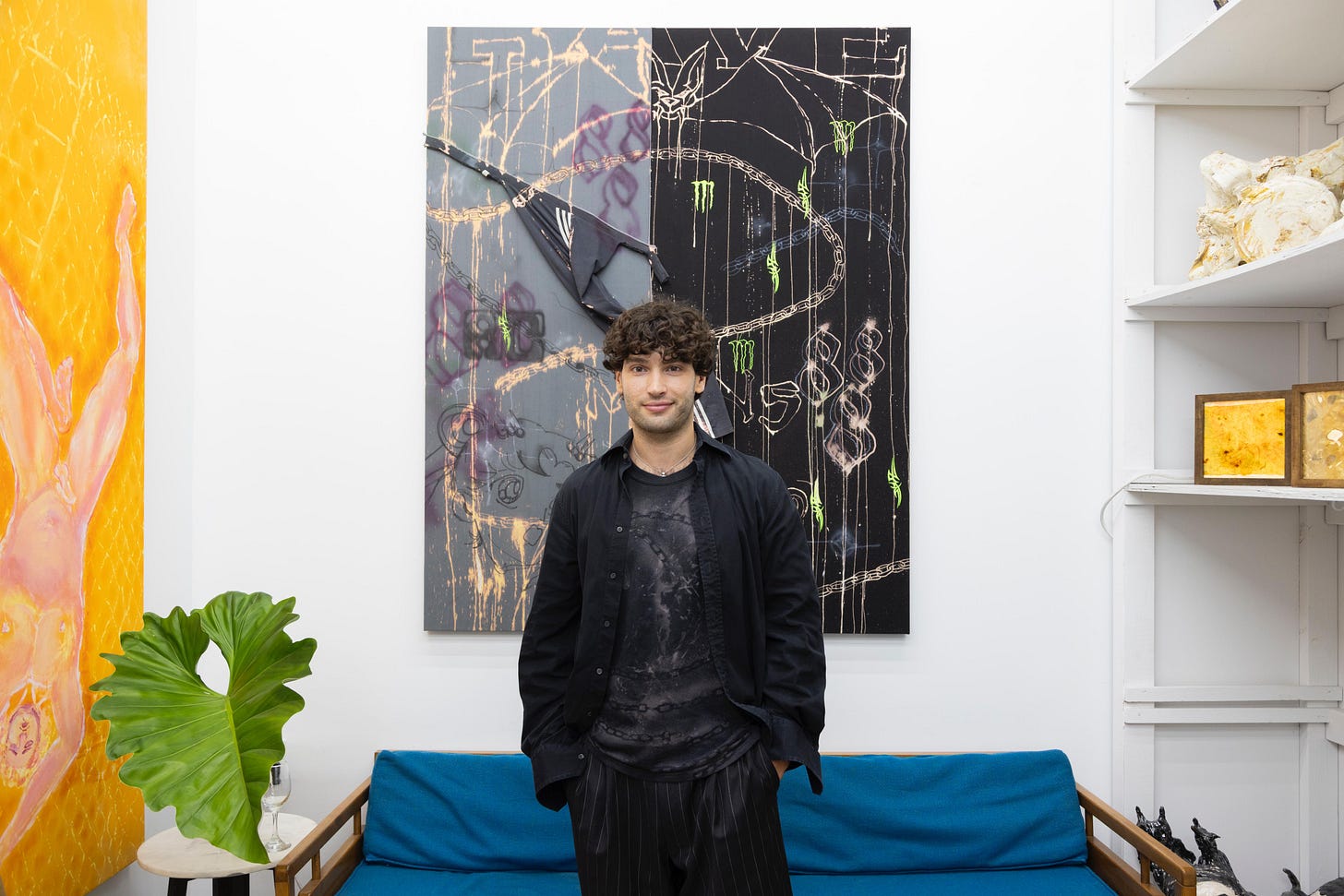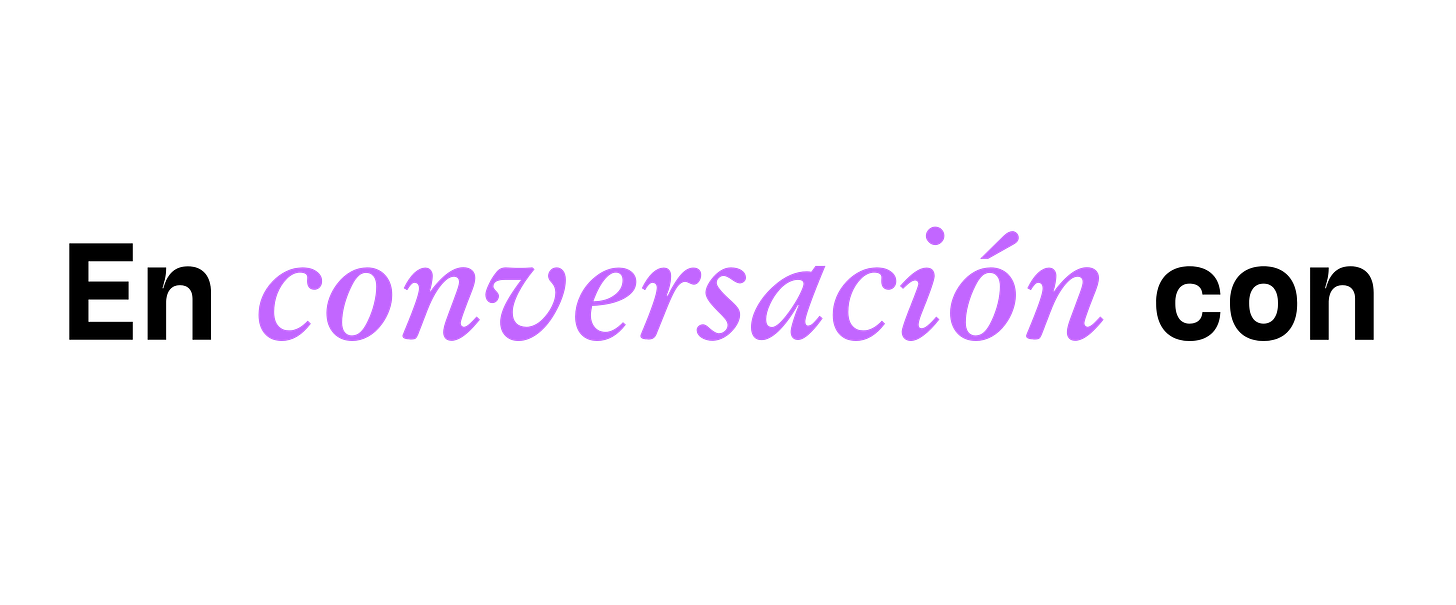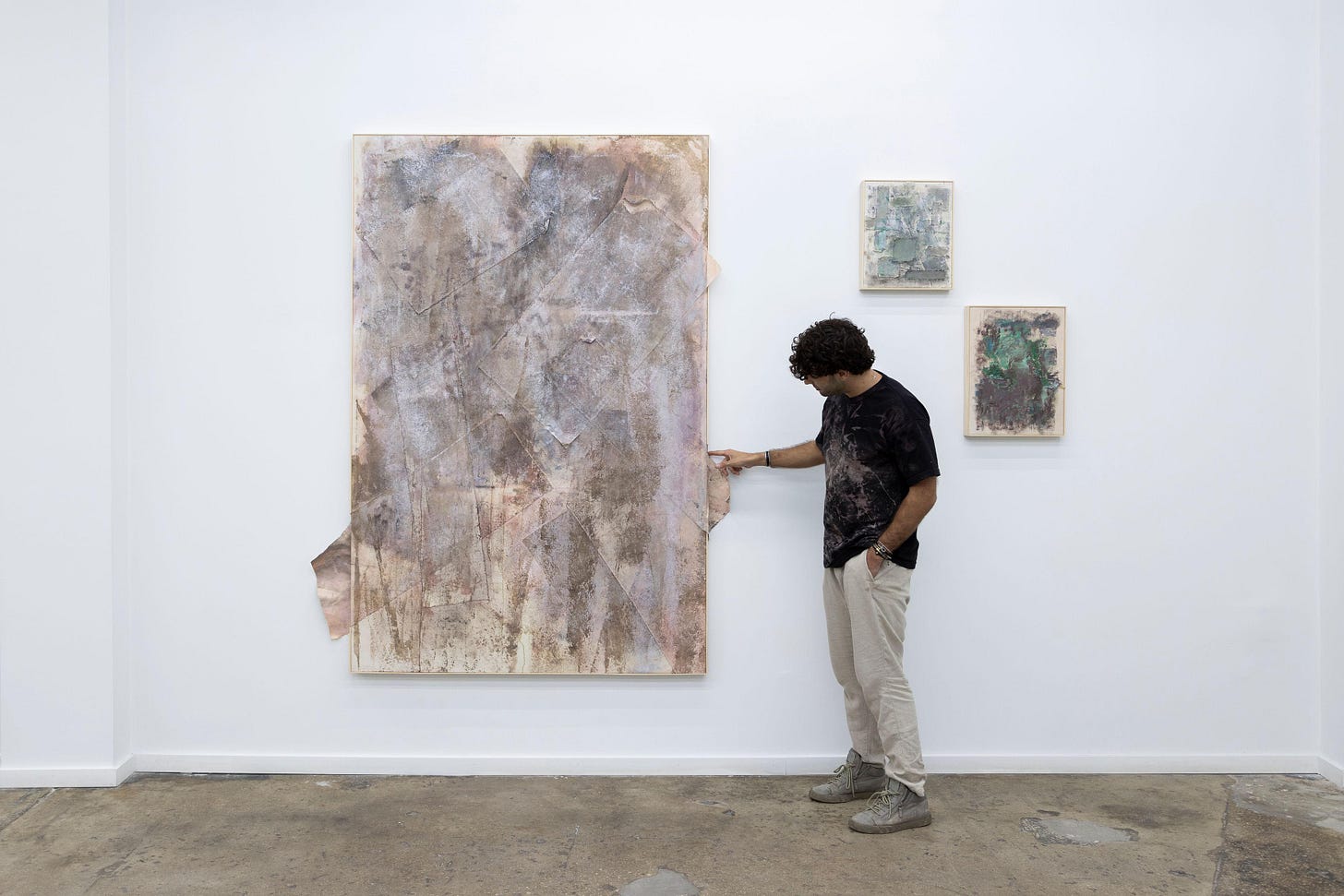In Conversation with: Tomás Redrado
En conversación con: Tomás Redrado (versión en español abajo)
Tomás Redrado is the founder of Tomás Redrado Art (TRA), a gallery dedicated to showcasing and elevating the work of Latin American artists. At just 29 years old, he has become a prominent figure on the contemporary Latin American art scene, with TRA now located in Miami, Buenos Aires, and a recently launched space in José Ignacio, Uruguay.
In this interview, the Argentinian gallerist invites us to delve deeper into his background and the experiences that brought him into the art world. He discusses the journey behind establishing his gallery, the challenges he encounters as a gallerist, and offers a closer look at his recent opening in Uruguay, highlighting its significance and vision for showcasing Latin American talent.
Q: Tell us about yourself, how did you get into the art industry?
Tomás Redrado: Art began as a form of personal refuge during a difficult time in my life, specifically my parents' divorce. In those moments, I discovered that art could reconnect me emotionally with my surroundings and give me a new perspective. It was thanks to family friends that I began to attend galleries and cultural events, and it was there that my interest in pursuing a career in this industry was born.
After studying International Relations, I always sought to link my academics with the cultural field. That curiosity led me to collaborate in projects such as The ReefLine in Miami, curated by Ximena Caminos. Although that project was put on hold due to the pandemic, I decided to take the plunge and found my own gallery in Miami. Since then, I have worked to promote Latin American art in a city that has become a cultural epicenter for our region.
Q: What motivated you to focus your gallery “Tomas Redrado Art” program on Latin American artists?
Tomás Redrado: Miami allowed me to see the richness and diversity of Latin American art from a new perspective. Here, influential collections such as those of the Rubells or Jorge Pérez have begun to include more artists from the region, and that inspired me to broaden my focus.
Initially, I was thinking of working exclusively with Argentinian art, but I understood that our region has an enormous potential that deserves to be represented in its entirety. Today, my gallery seeks to reflect this Latin American diversity, building an international identity that benefits artists and the cultural scene in general.
“Today, my gallery seeks to reflect this Latin American diversity, building an international identity that benefits artists and the cultural scene in general”
Q: How has your artistic vision evolved since your career began?
Tomás Redrado: Growing up in Buenos Aires shaped me with a European-influenced vision, but it was in Miami where I discovered my identity as a Latin American. Here I understood that the art of our region is not only diverse, but also has its own narrative that deserves to be valued globally.
Today, my focus is on highlighting that diversity and opening spaces that allow Latin American artists to dialogue with the world from their own perspectives.
Q: What do you find most exciting about your work as a gallery owner?
Tomás Redrado: What inspires me most is the creative process shared with artists. Designing exhibitions, planning fairs and materializing their visions is something I deeply enjoy. Art, for me, transcends the material; it is a tool to connect ideas and emotions.
“Art, for me, transcends the material; it is a tool to connect ideas and emotions”
Q: How do you select the artists you represent?
Tomás Redrado: I work in collaboration with curators who introduce me to new talent and I also spend time discovering artists on digital platforms like Instagram. The most important thing for me is that the artist is committed to their work and that their proposal brings something authentic to the artistic narrative.
Q: What was the process of establishing your gallery in Miami? What challenges did you face at that time?
Tomás Redrado: The biggest challenge was gaining legitimacy: gaining people's trust, awakening their interest in the artists we represent and getting them to become familiar with our program.
However, something unique about Miami, which you hardly find in any other city, is the general enthusiasm for sharing the art scene. Collectors here open their doors to artists and gallerists, creating a very dynamic and collaborative ecosystem.
Miami is an exceptional platform, and that's why I decided to relocate here. Today it is the capital of Latin American art and will be for at least the next 10 years. From many perspectives, it is already a global epicenter, with some of the largest transactions in the industry. Moving to this city was a natural decision.
The main focus of our gallery is to project Latin American art to the world, using Miami as a cultural and commercial bridge.
“The main focus of our gallery is to project Latin American art to the world, using Miami as a cultural and commercial bridge”
Q: What do you consider to be the most common mistake an emerging artist makes when seeking gallery representation?
Tomás Redrado: In Miami, many emerging artists face the challenge of maintaining full commitment to their work, in part due to the city's high cost of living. This leads them to prioritize other activities, which affects their artistic production.
For me, commitment and constancy are fundamental. I represent artists who have a clear vision and are willing to work to develop it.
“I represent artists who have a clear vision and are willing to work to develop it”
Q: Tell us more about your new space in José Ignacio, Uruguay. How did the idea come about?
Tomás Redrado: The proposal came from a partner who owns Arthouse, a real estate project focused on art. Although at first, I was hesitant to expand, when I visited José Ignacio, I realized the cultural potential and the impact a space there could have.
Now, the project combines a gallery and an artist residency. We will work with eight artists a year and organize four exhibitions reflecting the outcome of their residencies.
Q: And how do you see the local art scene in Uruguay?
Tomás Redrado: In José Ignacio, there is great cultural interest and a public with purchasing power that drives artistic demand. However, on a national level, Uruguay is still developing compared to other South American countries. This space is an opportunity to strengthen the local scene and connect it with the international circuit.
“This space is an opportunity to strengthen the local scene and connect it with the international circuit”
Q: You also have another space in Buenos Aires, specifically at Munar. How does your collaboration work?
Tomás Redrado: At Munar, we have a space that allows us to hold exhibitions for three months a year, focused exclusively on Argentinian artists. This collaboration complements our global approach by maintaining a direct connection with the art scene in my country.

Q: What are your future plans with the gallery?
Tomás Redrado: In the short term, we are working on exhibitions with Latin American and Central American artists and on our participation in fairs such as ArteBA, ArteBo and The Armory Show. In the long term, I dream of opening a permanent location in Buenos Aires and expanding the gallery to Europe, specifically Berlin.
Berlin is a key place for Latin American artists, thanks to its open-mindedness and vibrant cultural scene, and it will also allow us to meet European artists who are in tune with what we offer.
“Berlin is a key place for Latin American artists, thanks to its open-mindedness and vibrant cultural scene …”
Q: What do you enjoy the most about the art industry?
Tomás Redrado: The human connections. The art world is a space where people from diverse backgrounds and perspectives meet, which enriches every conversation and project.
The most difficult thing, however, is the industry's high degree of commercialization. Although creativity is at the center of everything, it is inevitable to have to balance it with the financial aspects.
Q: If there was one thing in the industry that you could change, what would it be?
Tomás Redrado: The ego. Although it's part of the ecosystem, I think it sometimes limits opportunities for collaboration. Art has the potential to bring people together and generate more open conversations, and that should be our priority as an industry.
“Art has the potential to bring people together and generate more open conversations, and that should be our priority as an industry”
To know more about Tomás Redrado and Tomás Redrado Art (TRA), visit:
Tomás Redrado es el fundador de Tomás Redrado Art (TRA), una galería dedicada a mostrar y elevar la obra de artistas latinoamericanos. Con tan solo 29 años, se ha convertido en una figura prominente en la escena del arte contemporáneo latinoamericano, con TRA ahora ubicada en Miami, Buenos Aires y un espacio recientemente inaugurado en José Ignacio, Uruguay.
En esta entrevista, el galerista argentino nos invita a profundizar en su trayectoria y en las experiencias que lo llevaron al mundo del arte. Nos habla del camino que lo llevó a fundar su galería, de los retos a los que se enfrenta como galerista y nos ofrece una visión más cercana de su reciente inauguración en Uruguay, destacando su importancia y visión para mostrar el talento latinoamericano.
P: Cuéntanos sobre ti, ¿cómo llegaste a la industria del arte?
Tomás Redrado: El arte comenzó como una forma de refugio personal durante una etapa difícil de mi vida, específicamente el divorcio de mis padres. En esos momentos, descubrí que el arte podía reconectarme emocionalmente con mi entorno y darme una nueva perspectiva. Fue gracias a amigos de mi familia que comencé a asistir a galerías y eventos culturales, y ahí nació mi interés por dedicarme a esta industria.
Tras estudiar Relaciones Internacionales, siempre busqué vincular lo académico con lo cultural. Esa curiosidad me llevó a colaborar en proyectos como The ReefLine en Miami, curado por Ximena Caminos. Aunque ese proyecto se pausó debido a la pandemia, decidí dar el paso y fundar mi propia galería en Miami. Desde entonces, he trabajado para promover el arte latinoamericano en una ciudad que se ha convertido en un epicentro cultural para nuestra región.
P: ¿Qué te motivó a concentrar el programa de tu galería “Tomas Redrado Art” en artistas latinoamericanos?
Tomás Redrado: Miami me permitió ver la riqueza y diversidad del arte latinoamericano desde una nueva perspectiva. Aquí, colecciones influyentes como las de los Rubell o Jorge Pérez han empezado a incluir más artistas de la región, y eso me inspiró a ampliar mi enfoque.
Inicialmente, pensaba trabajar exclusivamente con arte argentino, pero entendí que nuestra región tiene un potencial enorme que merece ser representado en su totalidad. Hoy, mi galería busca reflejar esa diversidad latinoamericana, construyendo una identidad internacional que beneficie a los artistas y a la escena cultural en general.
“Hoy, mi galería busca reflejar esa diversidad latinoamericana, construyendo una identidad internacional que beneficie a los artistas y a la escena cultural en general”
P: ¿Cómo ha evolucionado tu visión artística desde que comenzó tu carrera?
Tomás Redrado: Crecer en Buenos Aires me inculcó una mirada influenciada por Europa, pero fue en Miami donde descubrí mi identidad como latinoamericano. Aquí entendí que el arte de nuestra región no solo es diverso, sino que también tiene una narrativa propia que merece ser valorada globalmente.
Hoy, mi enfoque está en resaltar esa diversidad y abrir espacios que permitan a los artistas latinoamericanos dialogar con el mundo desde sus propias perspectivas.
P: ¿Qué es lo que más te apasiona de tu trabajo como galerista?
Tomás Redrado: Lo que más me inspira es el proceso creativo compartido con los artistas. Diseñar exposiciones, planear ferias y materializar sus visiones es algo que disfruto profundamente. El arte, para mí, trasciende lo material; es una herramienta para conectar ideas y emociones.
“El arte, para mí, trasciende lo material; es una herramienta para conectar ideas y emociones”
P: ¿Cómo seleccionas a los artistas que representas?
Tomás Redrado: Trabajo en colaboración con curadores que me presentan nuevos talentos y también dedico tiempo a descubrir artistas en plataformas digitales como Instagram. Lo más importante para mí es que el artista esté comprometido con su obra y que su propuesta aporte algo auténtico a la narrativa artística.
P: ¿Cuál fue el proceso de establecer tu galería en Miami? ¿Qué desafíos tuviste en ese momento?
Tomás Redrado: El mayor desafío fue ganar legitimidad: conseguir la confianza de las personas, despertar su interés por los artistas que representamos y lograr que se familiaricen con nuestro programa.
Sin embargo, algo único de Miami, que difícilmente encuentras en otra ciudad, es el entusiasmo general por compartir la escena artística. Los coleccionistas aquí abren sus puertas a artistas y galeristas, creando un ecosistema muy dinámico y colaborativo.
Miami es una plataforma excepcional, y esa es la razón por la que decidí establecerme aquí. Hoy es la capital del arte latinoamericano y lo será al menos durante los próximos 10 años. Desde varias perspectivas, ya es un epicentro global, con algunas de las mayores transacciones de la industria. Mudarme a esta ciudad fue una decisión natural.
El enfoque principal de nuestra galería es proyectar el arte de Latinoamérica hacia el mundo, utilizando a Miami como un puente cultural y comercial.
“El enfoque principal de nuestra galería es proyectar el arte de Latinoamérica hacia el mundo, utilizando a Miami como un puente cultural y comercial”
P: ¿Cuál consideras que es el error más común que comete un artista emergente al buscar la representación de una galería?
Tomás Redrado: En Miami, muchos artistas emergentes enfrentan el reto de mantener un compromiso pleno con su trabajo, en parte debido al alto costo de vida de la ciudad. Esto los lleva a priorizar otras actividades, lo que afecta su producción artística.
Para mí, el compromiso y la constancia son fundamentales. Represento a artistas que tienen una visión clara y están dispuestos a trabajar para desarrollarla.
“Represento a artistas que tienen una visión clara y están dispuestos a trabajar para desarrollarla”
P: Cuéntanos más acerca de tu nuevo espacio en José Ignacio, Uruguay. ¿Cómo surgió la idea?
Tomás Redrado: La propuesta surgió de un socio que es dueño de Arthouse, un proyecto inmobiliario enfocado en arte. Aunque al principio dudé en expandirme, al visitar José Ignacio me di cuenta del potencial cultural y del impacto que podría tener un espacio allí.
Ahora, el proyecto combina una galería y una residencia artística. Trabajaremos con ocho artistas al año y organizaremos cuatro exposiciones que reflejen el resultado de sus residencias.
P: ¿Y cómo ves a la escena artística local en Uruguay?
Tomás Redrado: En José Ignacio, hay un gran interés cultural y un público con poder adquisitivo que impulsa la demanda artística. Sin embargo, a nivel nacional, Uruguay aún está en desarrollo comparado con otros países de Sudamérica. Este espacio es una oportunidad para fortalecer la escena local y conectarla con el circuito internacional.
“Este espacio es una oportunidad para fortalecer la escena local y conectarla con el circuito internacional”
P: También tienes otro espacio en Buenos Aires, específicamente en Munar. ¿Cómo funciona su colaboración?
Tomás Redrado: En Munar, contamos con un espacio que nos permite realizar exposiciones durante tres meses al año, centradas exclusivamente en artistas argentinos. Esta colaboración complementa nuestro enfoque global al mantener una conexión directa con la escena artística de mi país.

P: ¿Cuáles son tus planes a futuro con la galería?
Tomás Redrado: A corto plazo, estamos trabajando en exposiciones con artistas latinoamericanos y centroamericanos y en nuestra participación en ferias como ArteBA, ArteBo y The Armory Show. A largo plazo, sueño con abrir una sede permanente en Buenos Aires y expandir la galería a Europa, específicamente Berlín.
Berlín es un lugar clave para los artistas latinoamericanos, gracias a su mentalidad abierta y su vibrante escena cultural y además nos va a permitir conocer artistas europeos que estén en sintonía con lo que ofrecemos.
“Berlín es un lugar clave para los artistas latinoamericanos, gracias a su mentalidad abierta y su vibrante escena cultural …”
P: ¿Qué es lo que más disfrutas de la industria del arte?
Tomás Redrado: Las conexiones humanas. El mundo del arte es un espacio donde convergen personas de diversos orígenes y perspectivas, lo que enriquece cada conversación y proyecto.
Lo más difícil, sin embargo, es el alto grado de comercialización de la industria. Aunque la creatividad está en el centro de todo, es inevitable tener que balancearla con los aspectos financieros.
P: Si hubiera una cosa en la industria que pudieras cambiar, ¿cuál sería?
Tomás Redrado: El ego. Aunque forma parte del ecosistema, creo que a veces limita las oportunidades de colaboración. El arte tiene el potencial de unir y generar conversaciones más abiertas, y esa debería ser nuestra prioridad como industria.
“El arte tiene el potencial de unir y generar conversaciones más abiertas, y esa debería ser nuestra prioridad como industria”
Para saber más sobre Tomás Redrado y Tomás Redrado Art (TRA), visita:









